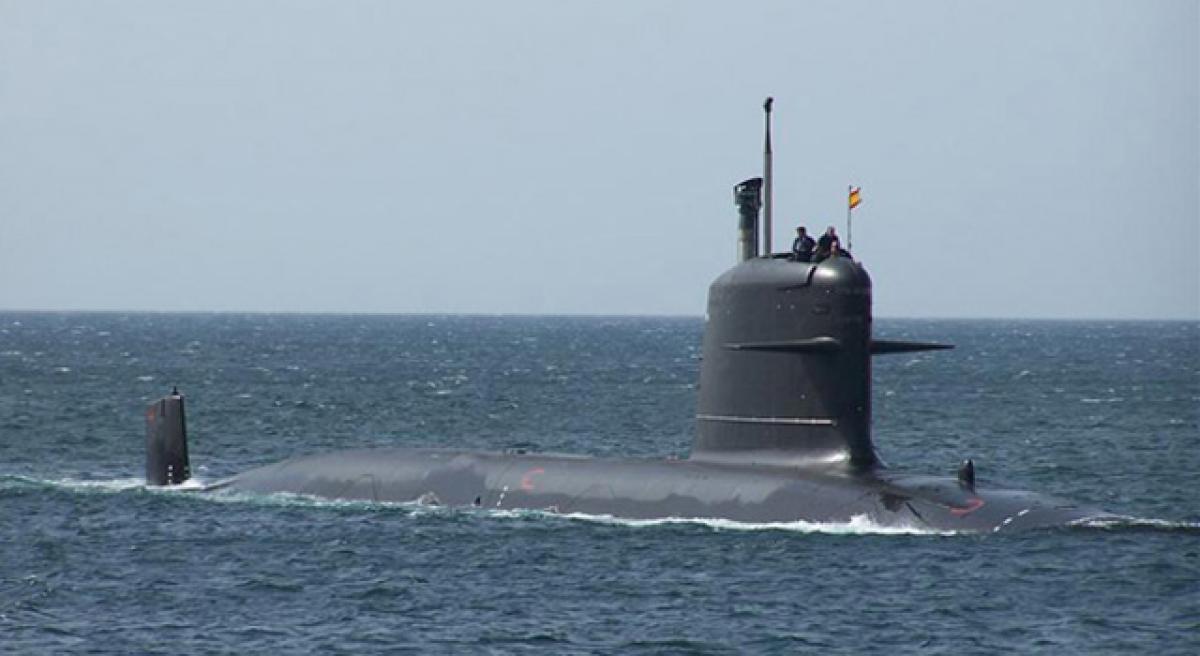Live
- 150 Families from YSRCP Join TDP in Tanakallu Mandal
- Special prayers offered at Dargah during Keshineni Chinni's Nomination
- Dell launches AI-powered commercial PC portfolio in India
- Maha: 5 Vidarbha constituencies records 32.36 pc polling till 1 pm
- Congress, CPI-M not part of INDIA bloc in Bengal: Mamata Banerjee
- Madhubani Saree: The epitome of traditional elegance and modern beauty
- Fire in TTD Forest in Tirumala
- SC dismisses rape survivor's plea seeking action against Kerala judge
- Chiranjeevi Engages with Russian Delegates on Creative Ventures in Hyderabad
- Has Allu Arjun's ‘Pushpa 2’ raked in Rs. 1000 Crore Pre-Release Business?
Just In

Submarines are the ultimate stealth weapons. Despite advances in sonar technology over the decades, detecting, tracking and targeting submarines remains extremely difficult, particularly in the Indian Ocean where the salinity of the seas and the presence of thermal zones of variable water temperature make submarine detection extremely difficult.
Submarines are the ultimate stealth weapons. Despite advances in sonar technology over the decades, detecting, tracking and targeting submarines remains extremely difficult, particularly in the Indian Ocean where the salinity of the seas and the presence of thermal zones of variable water temperature make submarine detection extremely difficult.
Submarines like the Scorpene make this game of detectionand counter-detection even tougher. Designed to be extremely silent, the Scorpene can loiter under water for days, scouring the seas through long-range passive sonar signals, which detect the presence of other submarines and warships in the vicinity. It was supposed to be India's ultimate stealth weapon.
No more. The leak of Scorpene's classified details running to some 22,400 pages is a disaster to the India's defence plans. Under the Project 75 programme, the Ministry of Defence had approved construction of two types of new-generation submarines in 1997. And in 1999, negotiations for the Scorpene submarines began with Thomson-CSF, which later became Thales, and which by 2005 jointly owned Amaris with French shipyard DCN.
The Scorpene is a conventional submarine with classical diesel propulsion. It is 219-foot long and has a speed of over 20 knots for a displacement of 1,700 tonnes. With 31 men on board it can remain at sea for about 50 days and can dive to a depth of more than a thousand feet.
In November 2002, the then Union Government approved a long-term perspective plan for indigenous construction of submarines and acquisition of national competence in submarine building. Project 75 is part of this plan. Mazagon Docks Limited, Mumbai, was identified as the yard to ultimately construct French-designed Scorpene Submarines on successful completion of negotiations with the French company.
When the DCNS India Private Limited was inaugurated in March 2009 in Mumbai, its main mission was to support the naval shipyards and industries (Naval Technical Advice Department), to develop local services with Indian talents (Design & Marine Engineering Department), to achieve localised production with large base industrial partners (Programme Department) and to extend sourcing opportunities for both local and international needs (Sourcing & Purchasing Department).
The indigenisation contract itself was signed with the Visakhapatnam-based Flash Forge India Private Limited for the supply of critical parts for the Scorpene submarines being built at Mumbai's Mazagon Dock Limited (MDL). The whole world coming to know what we are hiding under our waters and where for our defences, is certainly no good news.
What is the way forward for the Indian government? It also raises several questions on the "Make in India" campaign too, of which Defence sector is a major beneficiary because of all the 'local' component of the deal. The Indian Navy has been in forefront in indigenisation of its platforms, systems, sensors and weapons.
It is pertinent that its capabilities are fast increased in view of the changing maritime scenario and with China developing its 'string of pearls' all around us posing a serious threat to our defence capabilities. No doubt, we would like to know where the leak has come from. A more important question is whether we should go ahead with the deal and buy these toys now.

© 2024 Hyderabad Media House Limited/The Hans India. All rights reserved. Powered by hocalwire.com







